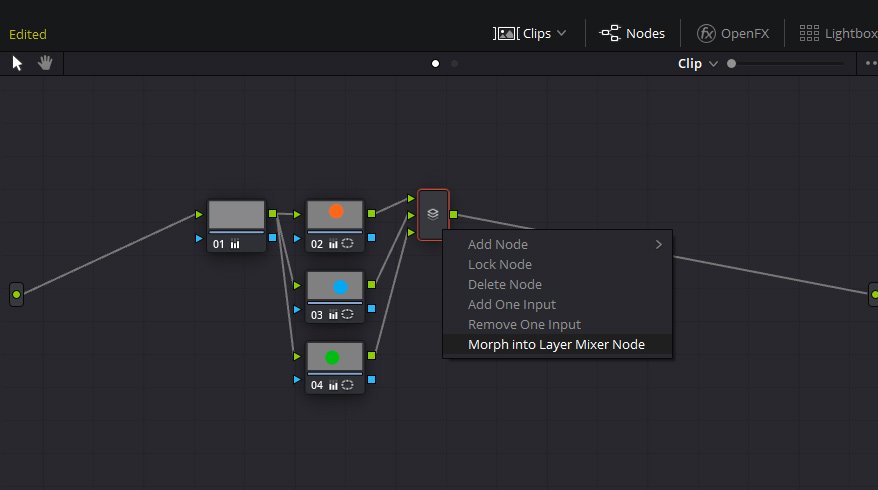Differences Between Serial Nodes, Parallel Nodes and Layer Nodes in DaVinci Resolve
So, you’re taking your first steps in the world of color correction and color grading, but you don’t know the differences between the different nodal structures in DaVinci Resolve.
If that’s the case, you’re in the right place!
In this article, I’ll discuss the differences between serial nodes, parallel nodes and layer nodes.
Serial Nodes
Serial nodes are simply nodes that are connected to each other in a linear fashion, one after the other.
These nodes are used to create one of the most common and most basic structures in DaVinci Resolve.
Being connected in a linear fashion, the output of one node automatically becomes the input of the next node. For this reason, the order in which the operations are executed is very important.
Parallel Nodes
Parallel nodes offer us a very interesting way of organizing our corrections.
Parallel nodes allow us to apply and organise more overlapping corrections at the same time, such as when we need to apply a group of secondary corrections all at once.
A parallel node structure is made up of a minimum of two nodes which share the same input. Their output, on the other hand, feeds into another node which is called the parallel mixer.
The task of the parallel mixer is to combine the outputs of all the parallel notes into one single output.
Layer nodes
A layer node structure is visually identical to a parallel node structure, the only difference is in how they work.
Layer nodes allow you to combine more corrections at the same time, but always prioritising the image associated with the lowest output.
To give you an example: let’s pretend that our structure has three nodes.
Node 3 will be prioritised over node 2 and node 1, and node 2 in turn will be prioritised over node 1.
In layer node structures, the nodes’ output also feeds into an other node called the layer mixer, which in turn combines the outputs of all the nodes into one single input.
A very useful clarification that I feel I should make is that you can always convert a parallel structure into a layer structure, and viceversa. You can execute this conversion simply by right-clicking on the parallel mixer and selecting “morph into layer mixer”, and viceversa.
I hope that this article has helped you to better understand the node structures of DaVinci Resolve.
Did you find this article helpful? Buy me a virtual coffee!
Sign up to my Newsletter to get your Free Colorist Pack!
You'll also receive updates on upcoming Products, Giveaways, Exclusive Content and more!










